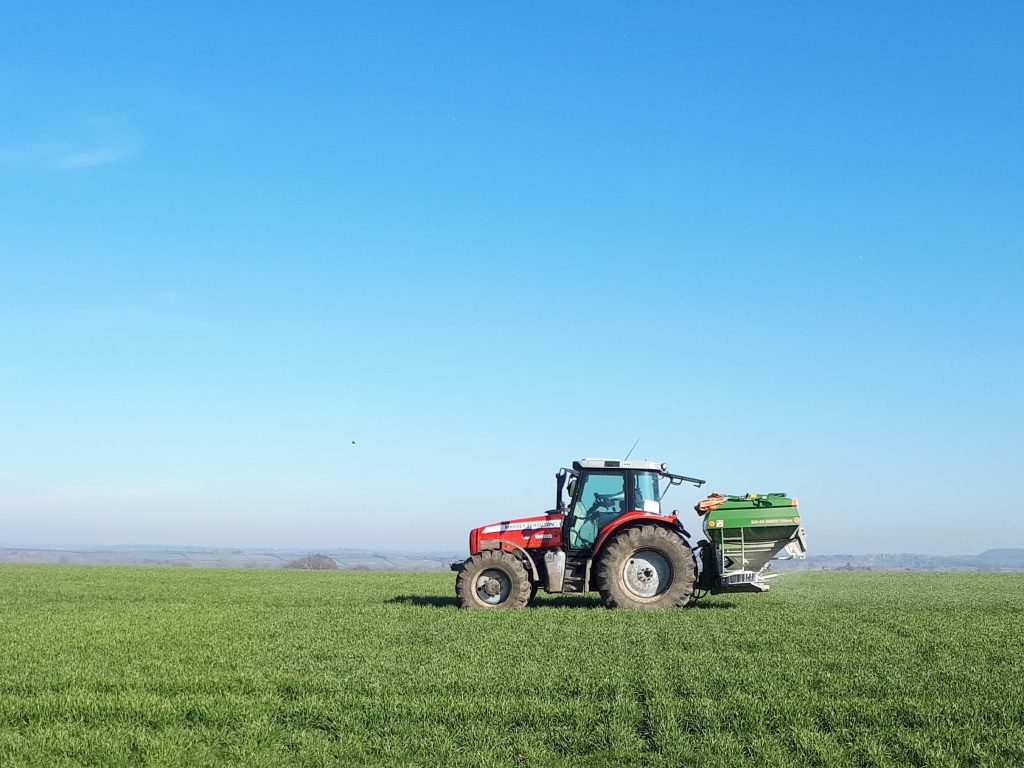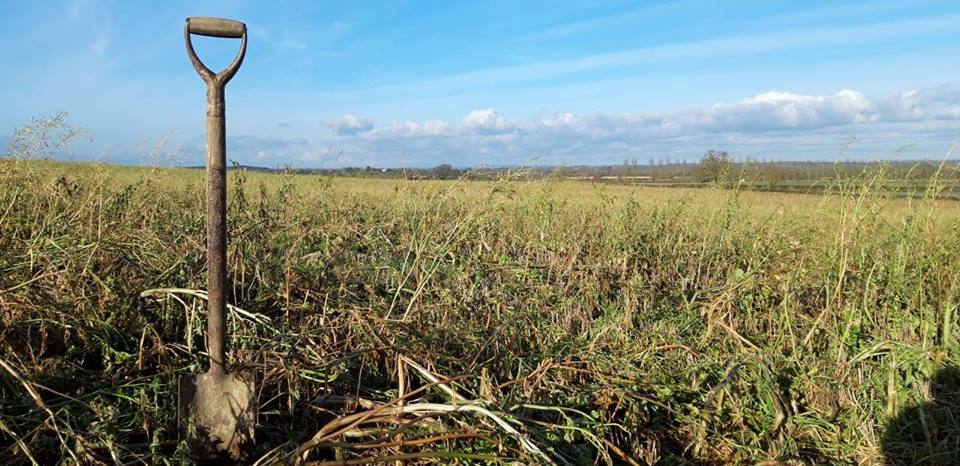Wheat
At the beginning of the month, we saw the final load of last year’s harvest leave the farm. With the shed empty, it gave me the opportunity to square up the store, just in time for the influx of spring seed and fertiliser.
The Wheat in the field received its nutritional dressing of Sulfan at 180kg/ha which went on ahead of rain at the end of the month. This early dressing helps us to promote tillers and retain those that we already have. Looking after our tillers means our tillers look after our yield in turn!

Sulfan going onto our Wheat at 180kg/ha
Oilseed Rape
Breaking with tradition, we have been trialing a different variety of OSR. We’re running side by side comparisons between our typical conventional variety, KWS Campus, and the hybrid variety, DK Expedient.
On first assessment, the Expedient had strong Autumn vigour and has continued to have notably greater Spring vigour over the Campus variety. With seed cost of almost double that of the conventional variety, the hybrid’s traits will stand it in good stead, should we continue to see higher incidences of flea beetle and their larvae – making the price a little more palatable!
On valentine’s day, I showed the OSR some love with an application of 200kg/ha of Sulfan. Unfortunately, I wasn’t the only one fond of this crop in February; it seems, with the warm weather, pollen beetle have moved in ahead of schedule. Not yet at threshold, I’m keeping my eye on them whilst amazed that we’re even thinking about this as early as February!

Rape on the farm has been doing exceptionally well this year
NRoSO Course
Topping up my knowledge, I started the month with the annual NRoSO course. This year, it proved to be more of a recap on legislation and best practice techniques rather than focusing on a single topic.
The meeting proved to be interesting nonetheless and the loss of important active ingredients made for a lively discussion. I thought this was neatly pulled together by a single slide showing the impact of the loss of certain seed treatments such as Deter.
Across a hectare or 10,000m2, a seed treatment applies approximately 58m2 of active ingredient, as opposed to the complete coverage of a spray. Accounting for a 94% reduction in chemical use which brings with it greater safety to the environment, the removal of such treatments certainly feels like a retrograde step.
With this in mind, I’m confident that continuing our focus on soil health is vital going forward, to help support healthy, resilient plants and to maintain a structure that limits run off and leaching to protect the tools we still have.

NRoSO course provided some thought provoking topics
Spring Drilling
With conditions practically unheard of for February, we had an opportunity too good to miss. The short-sleeved shirts were dug out of the wardrobe and we were away! This year, we’re going for spring beans as our spring legume break crop. The decision, in part, was led by our dry winter. Having plants in the ground earlier to put down strong roots would be key to a successful spring crop in yet, again, another unusual year – cue us having a wet summer.
Brought in from a derogated seed lot at 70% germination, the Lynx beans appearance didn’t fill us with confidence. Pinched and broken beans, along with plenty of bruchid beetle damage, prompted us to do a germination test. The results were positive and with the perfect nursery seedbed conditions that our Mzuri Pro-Til provides, we should have no problem establishing a good crop.

This year we're going with Spring Beans which are drilled at the perfect depth with our Mzuri Pro-Til 3T